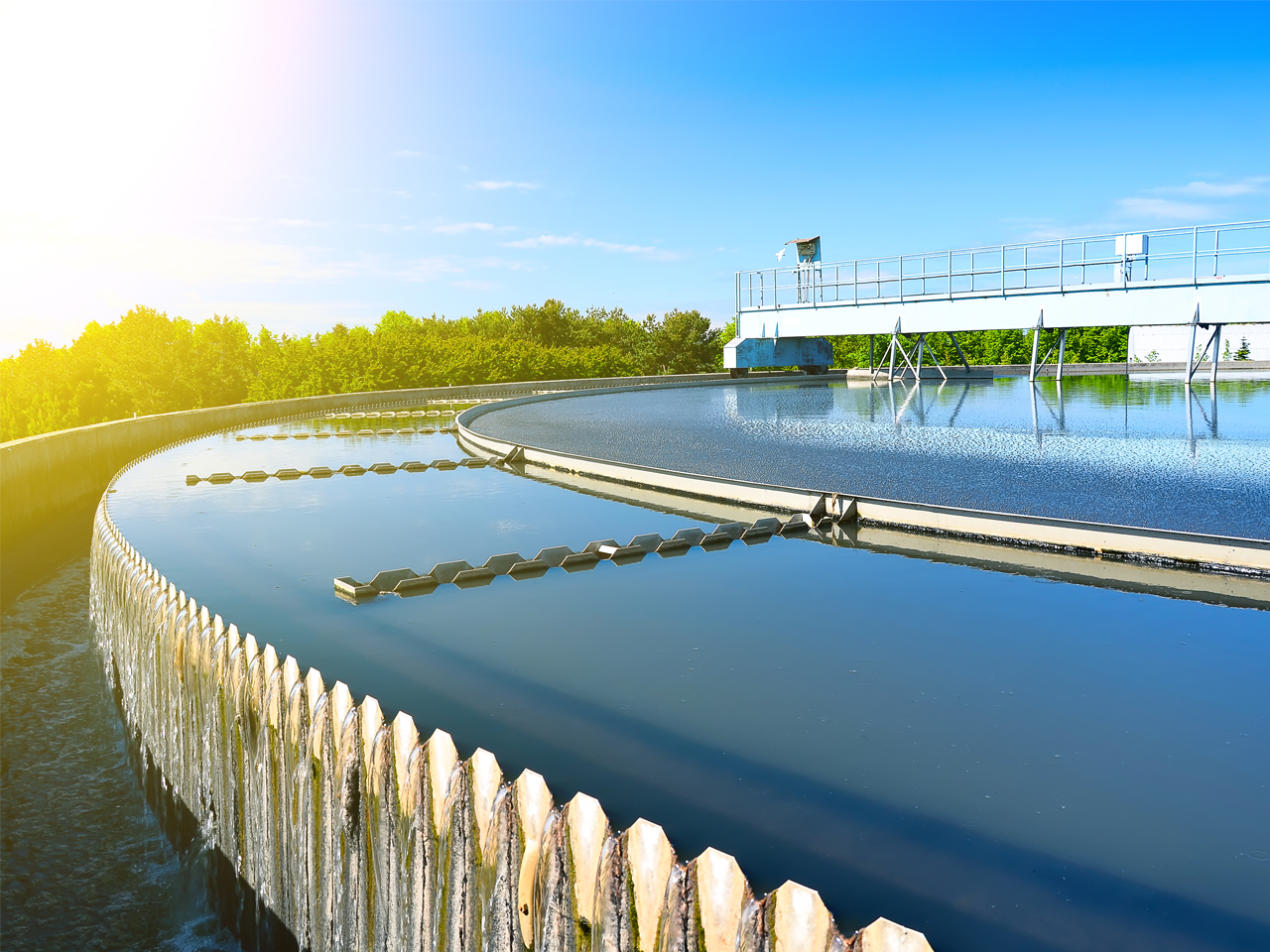Interested in Energy?
Get Energy articles, news and videos right in your inbox! Sign up now.
Energy + Get AlertsIn recent years inflation has driven up the cost of almost everything. Energy costs have seen some of the most extreme increases.
Since energy is a major expense for drinking water and clean-water utilities, the time is right to look for ways to cut down on consumption of fuels and electricity. Possibilities range from big-ticket projects like investing in biogas-to-energy projects, to retrofitting high-efficiency pumps, blowers, motors and lighting.
Boyd Gregg, P.E., specializes in energy efficiency as a senior business development manager with ENGIE, a company that offers a broad spectrum of energy-related services to utilities and enterprises in multiple other business sectors. That work includes helping organizations develop efficient carbon-free energy solutions.
Among its specialties, ENGIE offers performance contracting, a way for utilities to implement energy-efficiency projects and attain long-term savings guaranteed by contract. Gregg talks about the current energy picture and sound energy strategies for utilities in this Q&A.
Where do you see the greatest room for improvement in energy usage for drinking water and clean-water utilities?
Gregg: There is room for improvement particularly with older equipment. A great example is older blower technology in wastewater treatment plants compared to newer high-speed turbo blowers. We can also look at different ways to capture energy, such as anaerobic digesters that create biogas that can be used productively. We still see a lot of treatment plants flaring biogas.
What role can technology and instrumentation play in energy saving?
Gregg: If you look back 50 years or so, energy was relatively inexpensive. Wastewater treatment plants could afford to over-aerate. They could afford to put in bigger pumps and motors than they needed. On the flip side, automation was just becoming commercialized. Control systems were pretty expensive.
How has the picture changed since then?
Gregg: The equation has essentially flipped. Energy has become much more expensive, while controls that can help save energy have become much less expensive. We have technologies that can automate many processes. A great deal of energy can be saved just by modulating blowers or valves to turn down DO levels. That kind of control wasn’t available even 30 years ago. Technology continues to advance. It’s quite remarkable how far we’ve come with automation and instrumentation in just the last 10 years.
Would you say the user-friendly nature of instrumentation has been a factor in its adoption?
Gregg: Yes. Different probes can be set up, and they can all talk to one another. There are common protocols that enable transfer of information back and forth. That’s certainly a huge improvement versus two or three decades ago. The newer HMI displays look almost like an iPhone and are nearly as easy to use.
In general, how would you assess the size of increases in energy prices?
Gregg: For long-term planning, we are using a 5% per year escalation in costs for natural gas and electricity. The amount of increase varies with the market. California, for example, will have a much higher price escalation than we would expect in South Carolina where I live. I would expect increases of 2% to 5%, depending on where you are in the country.
If utilities are creating greenhouse gas-reduction and climate action plans, does that make them less concerned about payback time on energy-saving investments?
Gregg: In some cases, yes. Again, it depends on where you are, but certainly it’s a consideration. It also depends on what value they place on a climate action plan and GHG reduction. In general, we focus on creating projects that will pay for themselves, where the revenue and the savings from the project pay for the debt service and any related increase in operating cost. Certainly, to the extent that they associate a value with greenhouse gas emission reduction, that helps.
Once a utility decides to take action, what is the best way to get started?
Gregg: Performance contracting is an excellent approach. In that world, a utility would issue a request for qualification for a performance contract, which usually includes an initial evaluation provided at no upfront cost. That yields a basic evaluation of whether and how soon the project will pay for itself.
How would you describe performance contracting?
Gregg: Under a performance contract, a utility works with an energy service company to implement a package of energy improvements that will deliver guaranteed savings. No upfront investment is required. The facility upgrades are paid for with future energy savings. If the energy savings fall short of the amount promised, the energy service company has to make up the difference. If the energy savings turn out to be more than the guarantee, the utility keeps the surplus.

What provides confidence that the project will deliver as promised?
Gregg: An investment-grade energy audit is an excellent takeoff point for a performance contract. After the initial evaluation to determine whether a project makes financial sense, the investment-grade audit clearly defines the design, the guaranteed maximum price for construction and the expected energy and operational savings and revenue. It’s a full pro forma showing all the cash flows associated with the project. On that basis the utility is in a sound position to decide whether to go forward.
How does the utility finance the capital and other costs of the energy upgrades?
Gregg: There are multiple ways they can borrow money. They can opt for traditional bond financing, or go to a private bank. Right now the bond market is probably the most attractive option in most cases.
Is it possible to finance the projects so that the annual savings are greater than the annual debt service and the utility gets positive cash flow from the start?
Gregg: Yes. That is fairly common.
In today’s world, what kinds of federal, state or other funding are available to offset the cost of energy improvements?
Gregg: Right now one of the best opportunities is contained in the federal Inflation Reduction Act. Tax credits of 30% to 50% are available for biogas-to-energy projects. The actual amount depends on factors such as Buy-American and prevailing wage requirements. Even though public utilities don’t pay federal income tax, they are still able to receive equivalent direct payments from the Department of the Treasury.
Is it still common for electric and gas utilities to offer rebates for certain energy-saving projects?
Gregg: Yes. Again, it depends on the utility, but usually there are some rebates available. Another thing for utilities to look at is peak demand reduction, for which utilities provide incentives. That’s a gift that keeps on giving.
Can greater energy efficiency bring associated benefits such as reduced equipment maintenance and longer service life?
Gregg: Typically, yes. If, for example, a pump or blower is operating at peak efficiency, it is going to last much longer. A pump or blower that is operating off the curve will vibrate and shake and make noise, and all of that is wasted energy. Variable-frequency drives help a lot, and that is another technology that has come way down in price. With VFDs, a pump can be operated much closer to its best efficiency point than if it were just being turned on and off.
What do you observe in terms of utilities pursuing net-zero energy?
Gregg: For wastewater utilities, the best opportunity for net-zero, or even for the ability to be a net energy producer, is through anaerobic digestion and co-digestion. Utilities that have excess digester capacity can bring in food-production waste and other high-strength organic wastes. Usually that waste can produce significantly more methane than primary and waste activated sludge. That gas can be cleaned up and converted to renewable natural gas. It can also fuel a combined heat and power system, or a thermal dryer that can turn biosolids into a Class A product.
How good is the opportunity for water and wastewater utilities to add renewables such as solar and wind to their operations?
Gregg: Depending on where they are, many utilities have land available for solar energy projects with battery storage. When battery storage can be implemented at cost-effective prices, solar becomes an excellent option because it can be used to offset peak demand.
Visit the ENGIE Storefront





